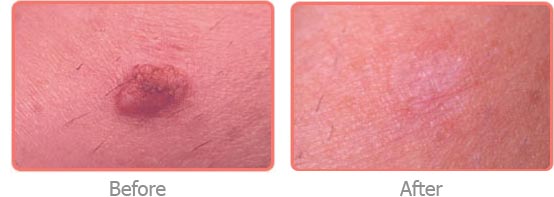by Baxter and Nina

From the hands to the hips, this pose is similar to Puppy pose so you build upper body strength while also increasing flexibility in the shoulders. Downward-Facing Dog with a chair activates the triceps muscles in the backs of your arms and the stabilizing muscles of your shoulder blades. As a side effect, if you keep your spine neutral, you also strengthen your front abdominal muscles (and who doesn’t love that). And, compared to Puppy pose, you may find that with your knees off the ground, you get a better spinal elongation. Other benefits not provided by Puppy pose include leg stretching and strengthening, which help move you toward the full pose, and increased upper body strengthening because you are bearing some weight on your hands.
Because this version is easier than a full Downward-Facing Dog pose, it is suitable for someone who is still building up enough strength to do the full pose. It is also wonderful for someone who can’t easily get up and down from the floor, or just isn’t dressed for it. Yes, it’s an excellent office or travel pose. Airport chair that is bolted to floor, anyone?
Instructions: Before coming into the pose, place your chair against the wall, with the back of the chair touching the wall so the chair doesn’t move when you come into the pose.
Start by standing in Mountain pose about two feet from the front edge of the chair. Bend your knees slightly and take an easy forward bend from your hips. Place your hands either on the chair seat with the heel of the hand catching the front edge (not dropping down below it) or with the base of your thumb on the seat and your fingers wrapped around the fingers around the sides of the seat, whichever feels best on your wrists.



If you have tight shoulders, be aware of the tendency of your front lower ribs to drop or your lower back to arch dramatically to compensate. Focus instead on maintaining your torso in Mountain pose (Tadasana) alignment.
Stay in the pose for six to eight breaths and, with practice, work your way up to 1 minute.
To come out of the pose, bend your knees and slowly walk forward toward the chair. When you are a foot or two from the chair, bend both knees and moving from your hip joint come up to standing.
Cautions: If you have rotator cuff injury or a history of dislocation of the shoulder, keep your chest lifting from the floor rather than pressing down toward the floor. Back off if you feel any pain. If you have lower back problems, make sure you keep your lower back neutral (not overly arched or rounded) in the pose.
Subscribe to Yoga for Healthy Aging by Email ° Follow Yoga for Healthy Aging on Facebook ° Join this site with Google Friend Connect












